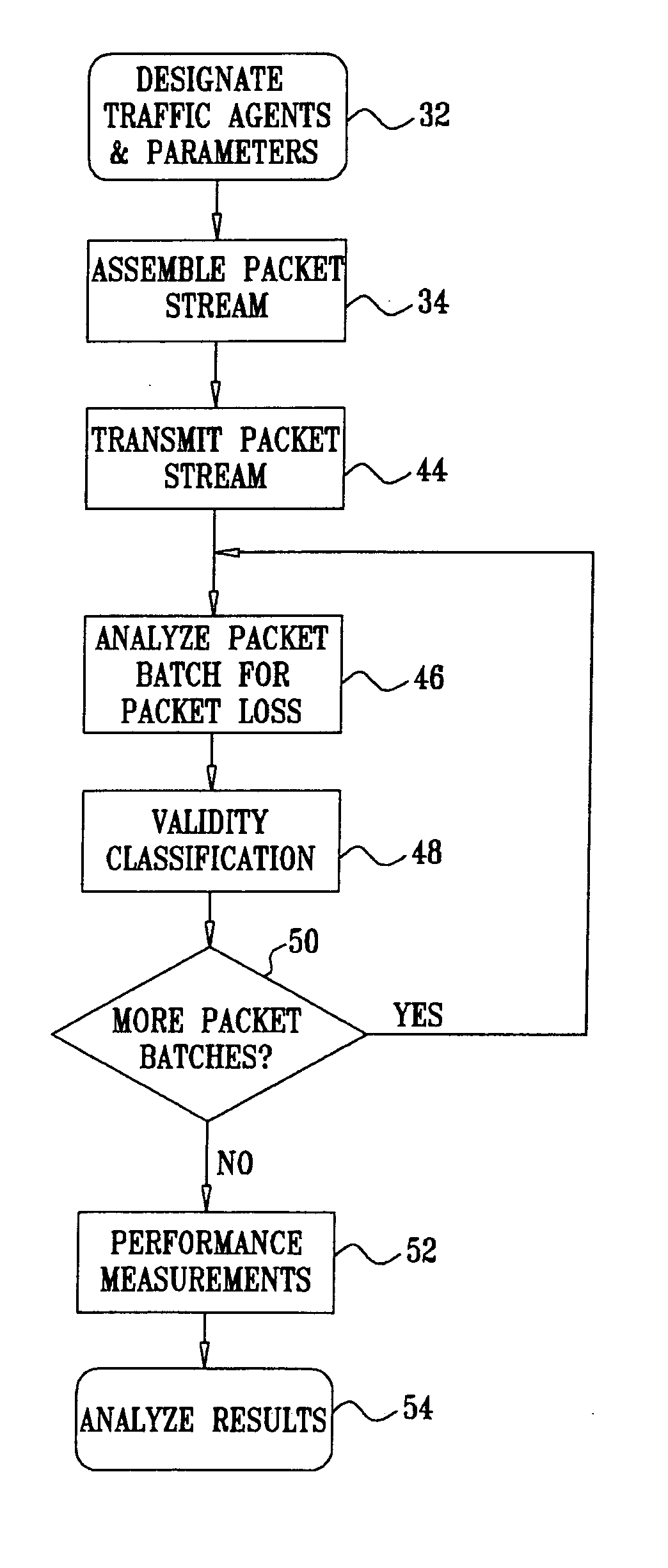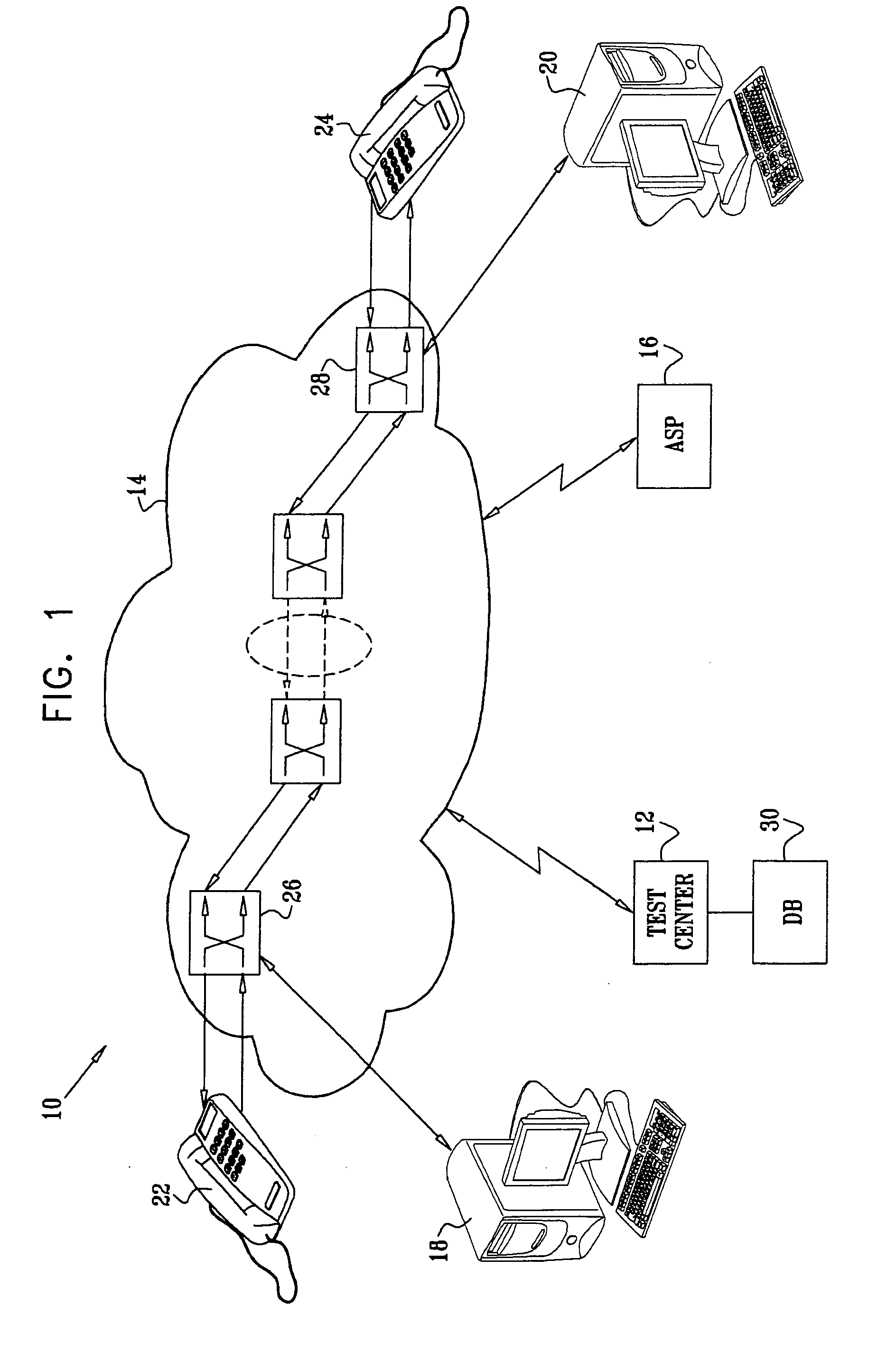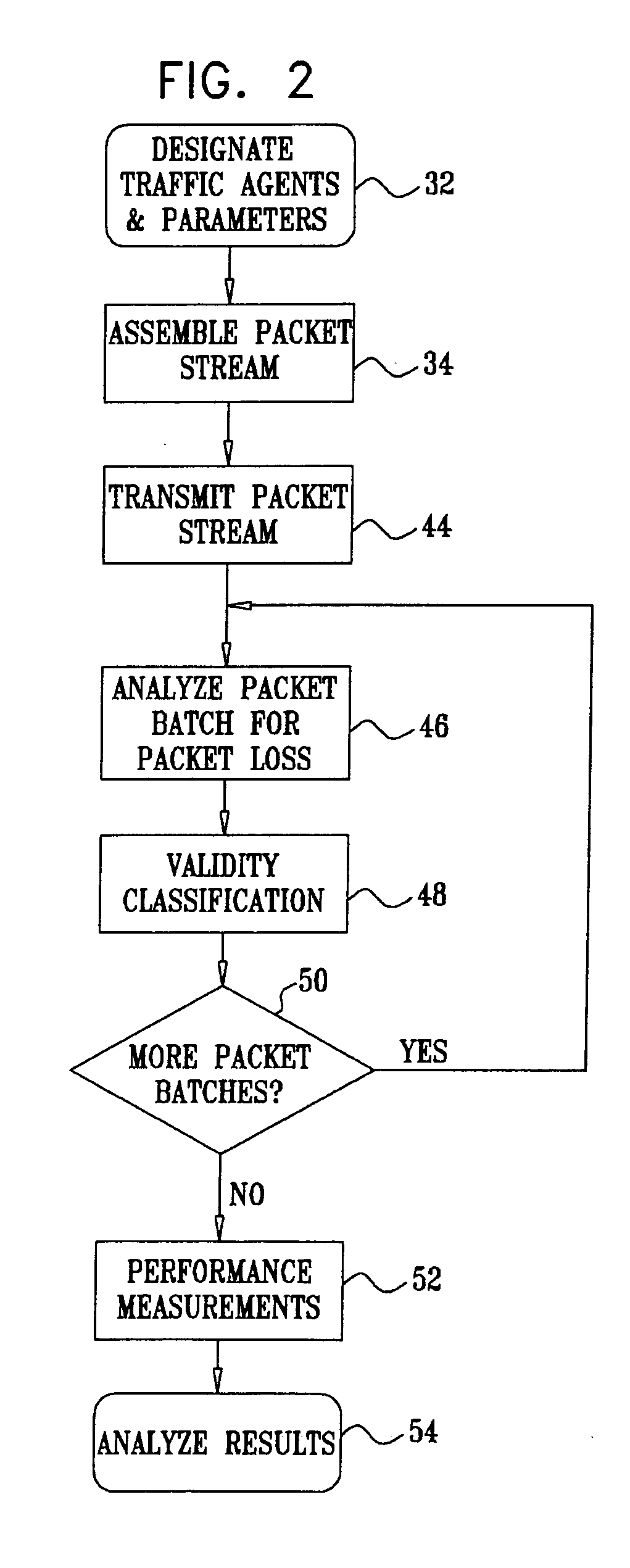Quality of service testing of communications networks
a communication network and quality testing technology, applied in the field of digital communication networks, can solve problems such as inability to diagnose incipient realtime service degradation, insufficient converged ip networks, and undermine voip communications
- Summary
- Abstract
- Description
- Claims
- Application Information
AI Technical Summary
Benefits of technology
Problems solved by technology
Method used
Image
Examples
embodiment 1
[0065] Reference is now made to FIG. 2, which is a flow chart illustrating a method of testing network performance in accordance with a disclosed embodiment of the invention. At initial step 32, sending and receiving traffic agents are designated. Parameters and appropriate identifiers are chosen for high and low quality service identification. The topology of the network being tested often influences the positioning of the traffic agents. Other considerations, such as the distribution of traffic, may also play a role in this determination. It should be emphasized that many different end points can be selected for different test runs.
[0066] Next, at step 34 a stream of intermingled high priority packets and low priority packets is configured at the sending traffic agent, according to the parameters that were chosen in initial step 32. In one embodiment, the high-priority packets are of type RTP with configurable DiffServ DSCP and RTP ports. The low-priority packets are of type UDP ...
example 1
[0084] At a line speed of 2M, the sending traffic agent sends four packet groups per second (250 ms spacing between the packet groups). As shown on the third data line of Table 3, each packet group is composed of two packet batches, each batch having three packets (2×3 packets=6 packets, back-to-back). This means that there are 16 low priority and eight high priority packets sent per second. The low priority payload is one Kbyte, and the low priority packet payload is about 20 bytes. The average transmission rate is below 150 Kbps, or less than 7.5% of the line capacity. The total number of packet batches is 600 in order to obtain a reliable statistical sample.
[0085] Reference is now made to FIG. 4, which illustrates the composition of another packet stream 56, according to a disclosed embodiment of the invention. Two representative packet groups 58 are shown, each comprising three packet batches 60. Each of the packet batches 60 has two low priority packets 40 and one high priorit...
embodiment 2
[0087] In this embodiment, the TTL field of the IP packets is set to a predetermined value L that determines the distance it can travel from the traffic agent. The TTL field is an 8-bit field that sets an upper limit on the number of routers (or network hops) through which a packet can pass. Its value describes the number of hops after which the packet is discarded. This field is initiated and set at the sender end to the predefined value L (32 or 64 for normal application traffic), and is decremented by one by every router through which the packet passes. When the value of the TTL field becomes either 1 or 0 (depending on routing behavior), then the datagram is thrown away by the network device and an error report is sent back to the sender. Specifically, once the packet has been discarded, the router sends an ICMP error message, “Time Exceeded” (type field 11) back to the sender. Using this method, when a router receives a datagram whose TTL field value is 1 or 0, then it does not...
PUM
 Login to View More
Login to View More Abstract
Description
Claims
Application Information
 Login to View More
Login to View More - R&D
- Intellectual Property
- Life Sciences
- Materials
- Tech Scout
- Unparalleled Data Quality
- Higher Quality Content
- 60% Fewer Hallucinations
Browse by: Latest US Patents, China's latest patents, Technical Efficacy Thesaurus, Application Domain, Technology Topic, Popular Technical Reports.
© 2025 PatSnap. All rights reserved.Legal|Privacy policy|Modern Slavery Act Transparency Statement|Sitemap|About US| Contact US: help@patsnap.com



